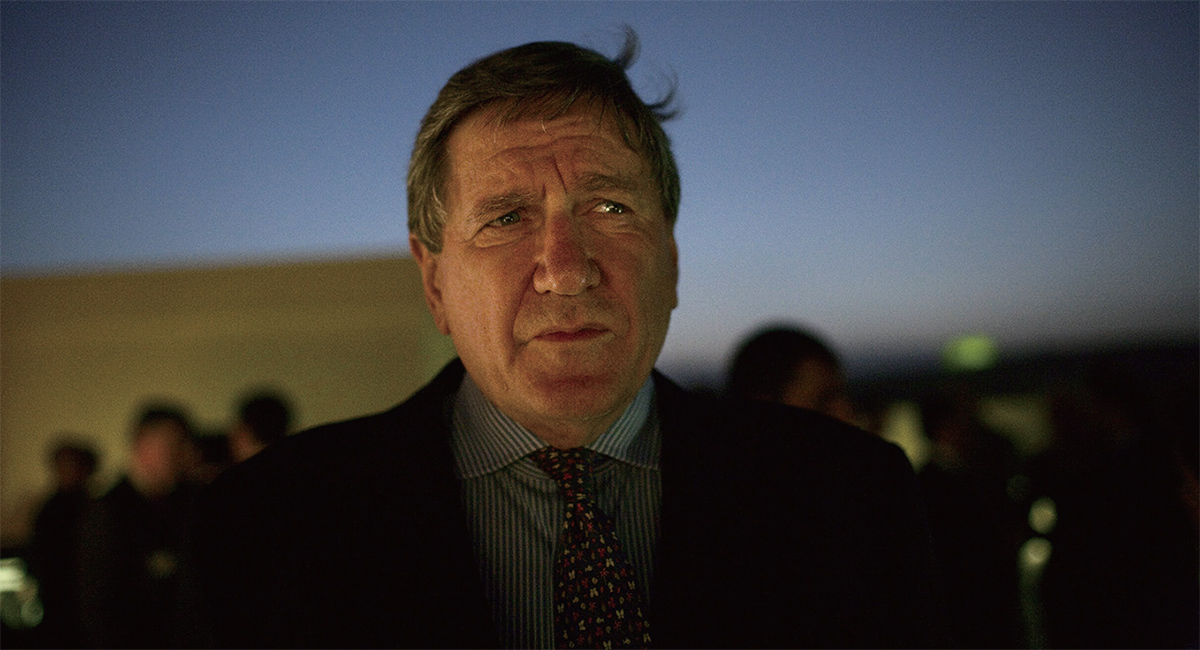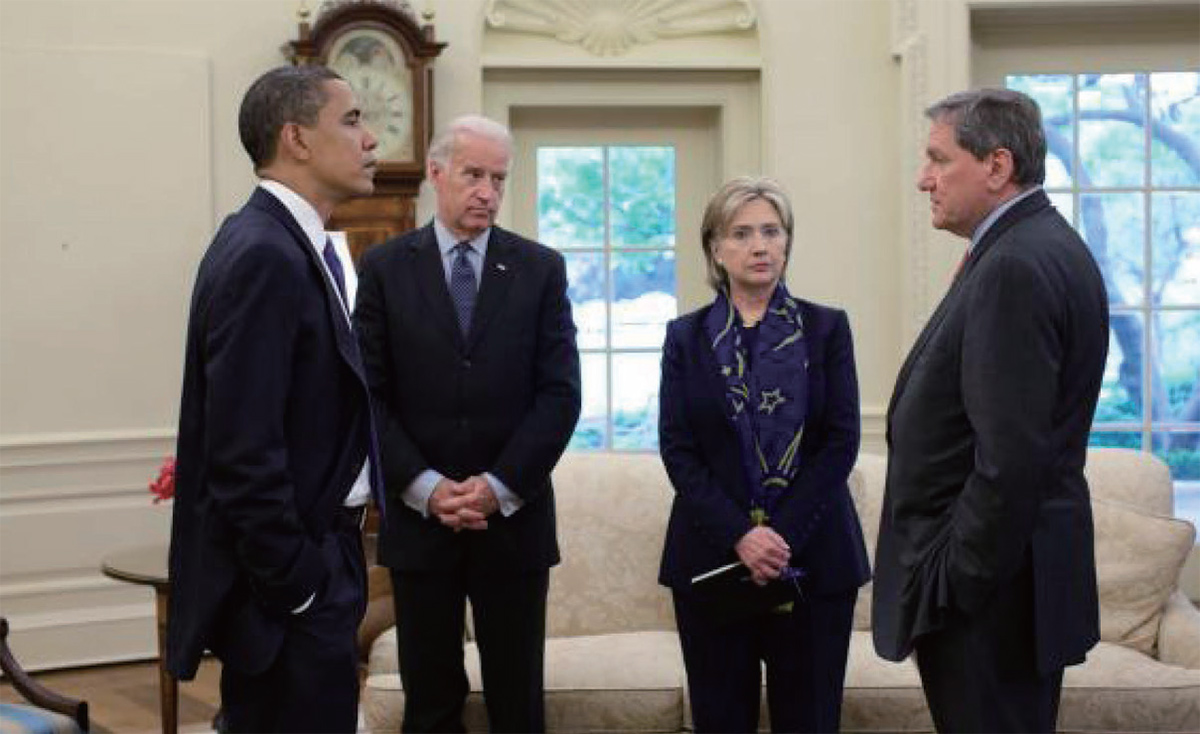미국의 훈장 없는 영웅
미국의 훈장 없는 영웅

RICHARD HOLBROOKE’S LIFE OF SERVICE
A new HBO documentary looks at the American diplomat, who passed away in 2010.Like many Great Men, the late diplomat Richard Holbrooke wasn’t a great father. The work-life balance was never a factor in his long foreign service career, spanning a steamy backwoods post in Vietnam at the dawn of that war to his last post, the one that arguably killed him, solving Afghanistan and Pakistan.
After his death in 2010, his filmmaker son David Holbrooke set out on a personal project, with the aim of trying to understand the life of his often absent father.
The result is HBO’s The Diplomat, a moving and revealing portrait of one of America’s best-known negotiators, a man who devoted himself to settling international disagreements with talk, not bombs, and who literally died trying to negotiate the “Af-Pak” mess.
The thrice-married Holbrooke was larger than life, a man who, besides negotiating historic peace treaties, was a bon vivant and a limelight hog.
The film opens with Holbrooke in his boyish early 20s, the classic Kennedy-era American abroad in khakis, Ray-Bans and oxford cloth. Fresh out of college, he was an ambitious young man who had set off to be a journalist but snagged a job in the foreign service first.
In letters home from Vietnam sent to his first wife, he conceded a childish thrill at the excitement of the air-slapping rotors on the helicopter rides, as well as his growing certainty that the American military strategy wasn’t going to work.
His sharply worded and critical dispatches from the field, unusual from a junior officer, set the tone for his career. Physically large and temperamentally even larger, Holbrooke was a bull in Washington’s delicate diplomatic china shop.
He thrived under Democratic presidents, serving in the Carter, Clinton and Obama administrations in various highranking positions, including U.S. representative to the United Nations. His greatest diplomatic feat was masterminding a peace accord in the Balkans, applying a combination of personal charm and steel on the bully, Serbian President Slobodan Milosevic, as NATO backed him up with bombs. The Diplomat goes behind the scenes, with footage of a haggard Holbrooke and General Wesley Clark, shuttling by car and plane hour by hour, day by day, through Balkan war zones and between warring leaders.
The film suggests, without stating it, that Holbrooke’s heart was broken by his failure to achieve his deepest career desire— an appointment as secretary of state—and by his inability to solve “AfPak.” Obama gave him arguably the most impossible job in the world, then proceeded to ignore his advice.
For the film, Washington Post journalist Bob Woodward shared tapes of private conversations in the final year of Holbrooke’s life in which he makes clear his reservations about the Afghan surge strategy. The audio of the soon-to-die negotiator describes his fear that the generals had too much sway, inserting too much “mil-think” on Afghanistan in the Obama administration.
In Afghanistan, as in Vietnam, Holbrooke felt that an overreliance on military solutions would ultimately fail, but as with Vietnam, few heeded him.
Images of him in The Diplomat on his final, impossible mission show what life and a foreign service career had done to his 69-year-old body: stepping off the tarmac in Kabul, his face haggard, gut enormous, he suffers the disdain of Afghan President Hamid Karzai—one world leader he was never able to charm or strong-arm.
On his last day at work, the day before he died, he tried to get in to see the president at the White House, but didn’t man age to get past David Axelrod. He hurried back to the Department of State to update Hillary Clinton, his boss.
Clinton gives a candid assessment of Holbrooke and Obama’s troubled relationship. “There were very different leadership approaches and they clashed,” she says of Holbrooke’s attempts to relate to Obama. She says she tried to solve the policy, generational and temperamental disagreements between the men without much success. “I was constantly interpreting for him [Holbrooke], translating, arguing. It was very frustrating for me to see and frustrating for him to go through.”
The icy relations are plain in a photograph of the president and veep scowling at Holbrooke, with Hillary Clinton standing between them, clearly the short female peacemaker in the room.
She was fond of “the big man” and always saved “the big chair” in her State Department office for him, she says. That’s where he was sitting when she noticed a deep red flush climbing from his neck up his face. She asked him if he was OK, and he said he wasn’t.
In the ambulance ride to the hospital, dying of an “aortic dissection,” an aide scribbled his last words on a scrap of a Chinese restaurant receipt. Holbrooke tearfully reads the aide’s notes aloud: “Tell my kids how much I love them.” “I love so many people.” “Career in public service is over.” And: “Don’t let him die here. Die at home with family.”
This poignant film reminds viewers that there are other sorts of heroes in wartime—and, perhaps even more crucially, in peacetime—who never wear the uniform or pin medals on their chests, but who give their lives for their country.
미국의 훈장 없는 영웅

폭탄 아닌 대화로 평화를 지키고 싶었던 미국 최고의 협상가 리처드 홀브룩의 일대기 다룬 다큐멘터리 HBO서 방영대다수 위인이 그랬듯이 2010년 세상을 떠난 미국 외교관 리처드 홀브룩도 좋은 아버지는 아니었다. 그는 긴 외교 인생에서 일과 개인 생활의 균형을 중요하게 생각한 적이 없었다. 베트남전 초기 찌는 듯한 베트남 오지의 첫 부임지부터 아프간·파키스탄 특사로 마지막 임무를 수행할 때까지. 홀브룩이 작고한 뒤 그의 아들 데이비드 홀브룩은 함께한 시간이 많지 않았던 아버지의 인생을 이해하기 위해 개인적인 프로젝트에 착수했다.
지난 11월 2일 HBO에서 방영된 다규멘터리 ‘더 디플로매트(The Diplomat)’는 그 결과물로 미국에서 가장 유명한 협상가로 꼽히는 홀브룩의 감동적이고도 흥미진진한 초상이다. 그는 국제 분쟁을 폭탄이 아니라 대화로 해결하는 데 헌신했으며 아프간과 파키스탄 사이의 복잡한 문제를 협상으로 해결하려다가 세상을 떠났다.
세 번 결혼한 홀브룩은 카리스마 넘치는 인물이었다. 역사적인 평화조약들을 성사시킨 협상가이기도 했지만 인생을 즐기며 살았고 주목 받기를 좋아했다.
이 다큐멘터리는 홀브룩이 20대 초반이던 시점에서 시작한다. 카키색 바지와 옥스포드 셔츠, 레이밴 선글라스 차림의 그는 케네디 대통령 시대에 해외에 나가 있던 미국 남성의 전형적인 모습이었다. 대학 졸업 후 저널리스트가 되려 했지만 외교 분야에서 먼저 일자리를 얻었다. 베트남에 있을 때 첫째 부인에게 보낸 편지에서 그는 헬리콥터를 탈 때 공기를 세차게 가르며 돌아가는 날개를 보면 어린아이처럼 신난다고 썼다. 또 미국의 군사 전략이 효과를 거두지 못할 것이라는 확신이 점점 더 커진다고 했다.
베트남 현지에서 보낸 홀브룩의 신랄하고 비판적인 보고서들은 신참 외교관으로서는 이례적이었으며 그의 진로를 다지는 초석이 됐다. 큰 덩치에 불 같은 성격을 지닌 그는 섬세하고 세련된 워싱턴 외교가에서 고삐 풀린 망아지 같은 존재였다. 홀브룩은 민주당 정부가 출범할 때마다 요직에 등용됐다. 카터와 클린턴, 오바마 정부에서 유엔 대사를 비롯해 다양한 고위직에 올랐다.
그의 가장 큰 외교적 업적은 발칸반도에서 평화협정을 이끌어낸 것이다. 그는 개인적인 매력과 강철 같은 터프함을 혼합해 슬로보단 밀로셰비치 세르비아 대통령에게 압력을 가했다. 나토의 폭격도 힘을 보태줬다. ‘더 디플로매트’는 막후의 광경도 보여준다. 초췌한 모습의 홀브룩과 웨슬리 클라크 당시 나토 사령관이 자동차와 비행기를 번갈아 타고 발칸의 교전지역을 누비며 각 계파의 지도자들을 만난다.
다큐멘터리는 홀브룩이 그토록 원하던 국무장관 자리에 오르지 못하고 아프간-파키스탄 문제를 해결하지 못한 데서 마음에 큰 상처를 입었음을 암시한다. 오바마 대통령은 그에게 세상에서 가장 불가능한 임무(아프간-파키스탄 문제 해결)를 주고 나서 그의 조언을 무시하고 일을 진행했다.
워싱턴포스트의 밥 우드워드 기자가 다큐멘터리를 위해 홀부룩이 사망하던 해에 그와 사적으로 나눈 대화의 녹음 테이프를 제공했다. 홀브룩은 여기서 아프간 병력 증파 전략에 대한 의구심을 드러낸다. 죽음을 앞둔 이 협상가는 오바마 정부의 군 장성들이 아프간 문제에 너무도 큰 영향력을 행사하며 ‘군사적 사고’를 지나치게 불어넣는다고 설명한다.
베트남에서와 마찬가지로 아프간에서도 홀브룩은 군사적 해결책에 지나치게 의존하면 실패할 거라고 생각했다. 하지만 베트남에서처럼 이번에도 그의 말에 귀 기울이는 사람은 거의 없었다.
‘더 디플로매트’에서 자신의 마지막 임무가 된 아프간에서의 불가능한 과업에 직면한 홀브룩의 이미지는 그의 개인적인 삶과 외교관으로서의 일생이 69세인 그의 몸에 어떤 영향을 미쳤는지를 보여준다. 카불의 활주로에서 걸어 나오는 그의 얼굴은 초췌하고 배가 많이 나왔다. 그는 하미드 카르자이 아프간 대통령에게 무시당한다. 카르자이는 세계 지도자 중 그가 매료시키거나 힘으로 누르지 못한 유일한 인물이었다.
근무 마지막 날(사망하기 바로 전 날)에는 백악관에서 오바마 대통령을 만나려 했지만 데이비드 액설로드 당시 대통령 선임고문의 문턱에서 가로막혔다. 그는 서둘러 국무부로 돌아가 상관인 힐러리 클린턴 국무장관에게 근황을 보고했다. 다큐멘터리에서 클린턴은 원만치 않았던 홀브룩과 오바마의 관계에 대해 “두 사람의 접근방식이 매우 달랐기 때문에 사사건건 충돌했다”고 말했다. 그녀는 정책에 관한 이견뿐 아니라 세대차와 성격차로 갈등을 빚는 두 사람의 거리를 좁혀보려 노력했지만 별 소용이 없었다고 말했다. “난 끊임없이 홀브룩에게 오바마가 한 말의 진의를 설명하려고 노력했지만 말싸움으로 끝나는 경우가 많았다. 당사자인 그는 물론 옆에서 지켜보는 나도 무척 힘들었다.”
힐러리 클린턴이 준비한 ‘큰 의자’
홀브룩이 대동맥박리로 죽어가면서 앰뷸런스에 실려 병원으로 향할 때 한 보좌관이 중국음식점 영수증 뒤에 그의 유언을 받아 적었다. 데이비드는 울먹이며 그 보좌관이 쓴 쪽지를 큰 소리로 읽는다. “내 아이들에게 내가 그 애들을 얼마나 사랑했는지 말해주시오.” “난 많은 사람들을 사랑합니다.” “이제 공직생활은 끝났습니다.” “여기서 죽지 않고 가족이 있는 집에서 죽게 하소서.” 이 가슴 찡한 다큐멘터리는 시청자에게 (평화시에는 말할 것도 없고) 전시에 군인 외에 다른 부류의 영웅도 있다는 사실을 상기시킨다. 군복을 입거나 가슴에 훈장을 걸진 않았지만 나라를 위해 목숨을 바치는 그런 사람들이다.
- NINA BURLEIGH NEWSWEEK 기자 / 번역 정경희
ⓒ이코노미스트(https://economist.co.kr) '내일을 위한 경제뉴스 이코노미스트' 무단 전재 및 재배포 금지
많이 본 뉴스
1제1167회 로또 1등 10명…당첨금 1인당 28억8400만원
2가수 우즈 측, 故 김새론 열애설에 “아티스트 사생활…확인 어려워”
3‘위증교사’ 재판받던 전북교육감 처남, 차 안서 숨진 채 발견
4민주, '당원투표 50%·국민여론조사 50%'로 대선 후보 선출
5광명 붕괴사고 하루 경과…실종자 수색작업 총력
6더불어민주당 “尹, 개선장군 행세하며 '퇴거쇼'…퇴근시간 퍼레이드 민폐”
7안철수, 오세훈 불출마에 “마음이 숙연…당 재건 위해 큰 역할 해주길”
8넥써쓰, 중국 이어 두바이까지…해외 진출 본격화
9오세훈 서울시장, 대선 불출마…“비정상의 정상화 위해 백의종군”






